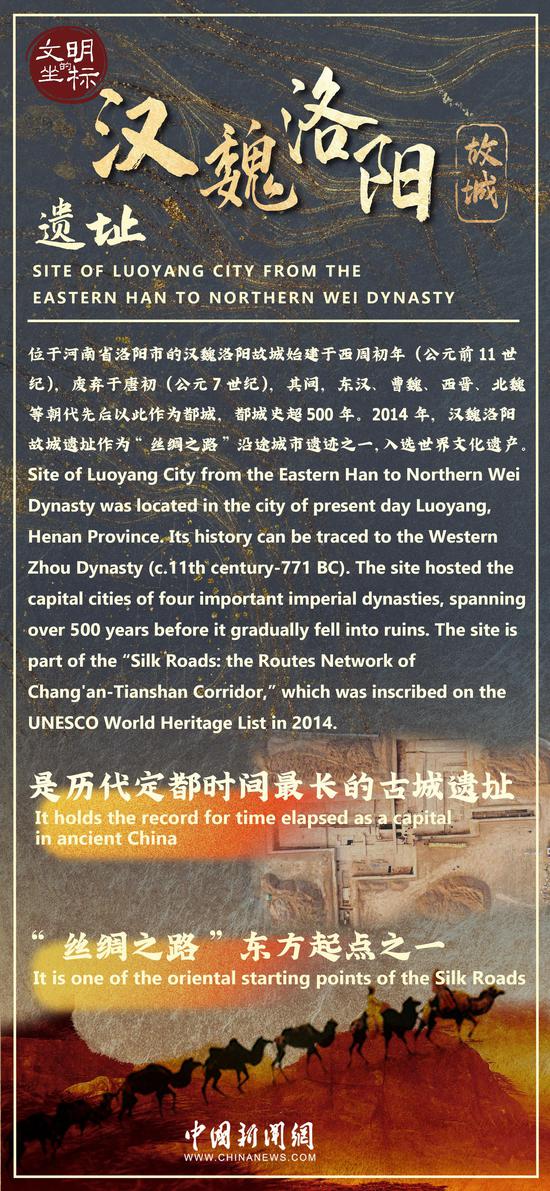
Customers select electrical products at a store in Yuncheng, Shanxi province. The city issued its first consumption vouchers for such products in May. (Photo by YAN XIN/FOR CHINA DAILY)
Stimulus package, anti-COVID-19 measures tipped to fuel sales
China's latest efforts to boost sales of automobiles, home appliances and other big-ticket items are expected to stimulate consumers' appetites, spur a consumption recovery amid the pandemic, and stabilize economic growth.
Analysts said the consumer market is likely to witness a growth recovery in the second half of this year, fueled by a package of stimulus measures and better containment of COVID-19.
Last month, the Ministry of Industry and Information Technology and four other central government departments issued a notice encouraging local governments to promote the consumption of green and smart home appliances in rural areas, and for old household appliances to be replaced by new ones.
The notice called for efforts to improve energy efficiency standards relating to home appliances and lighting products. It also appealed for the use of energy-saving air conditioners, refrigerators, water heaters, high-efficiency lighting products and degradable materials.
The government is to step up the procurement of green and low-carbon products, as more efforts are needed to guide enterprises to improve supplies of such products and services.
According to the National Bureau of Statistics, China's retail sales of consumer goods, a significant indicator of the nation's consumption strength, fell by 0.7 percent year-on-year to 21.04 trillion yuan ($3.12 trillion) in the first six months of this year.
The State Council, China's Cabinet, has announced 33 measures to stabilize economic growth in an effort to get the economy back on a normal track and keep major economic indicators within an appropriate range. The measures include boosting sales of items such as automobiles and home appliances to further unleash consumption potential.
The nation's home appliances industry, which has the world's largest production and sales volume, is a key driver of domestic consumption growth. Industry insiders said the promotion of green and intelligent home appliances is in line with efforts to pursue a green, low-carbon and sustainable development path.
Growth in China's home appliances sector is slowing. Data from the market consultancy All View Cloud, or AVC, which is based in Beijing, show the sector's value reached 760.3 billion yuan last year, up by 3.6 percent year-on-year, but a drop of 7.4 percent compared with 2019.
Chinese home appliance manufacturers are accelerating the recycling of disused products and launching more green and intelligent household appliances.
Home appliance giant Midea Group distributed shopping coupons to consumers who replaced old home appliances with energy-saving and intelligent alternatives via the company's 120,000-plus offline stores.
The group, which is based in Foshan, Guangdong province, has increased efforts to recycle disused household appliances in cooperation with companies involved in dismantling discarded electronic devices.
Yin Sheng, who is in charge of Midea Group's recycling business, said, "The recycling of old household appliances is conducive to boosting sales of new products, propelling industrial upgrading and accelerating research and development of new products and technological advancement."
Some 100 million to 120 million home appliances are discarded in China each year, and the total is expected to rise at an average annual rate of 20 percent, according to the National Development and Reform Commission.
Consumer electronics giant TCL Technology Group Corp has set up two companies to recycle and dismantle discarded home appliances-TCL-Aobo Environmental Protection Co in Tianjin and TCL-Deqing Environmental Protection and Development Co in Shantou, Guangdong province.
These two companies have dismantled and recycled some 4.69 million disused home appliances annually, including televisions, refrigerators, washing machines, air conditioners and computers.
TCL said it will increase investment to establish intelligent and automated dismantling bases. It estimates that about 7 million home appliances will be dismantled by 2024, a rise of 52 percent compared with the number this year.
Significant role
Zhao Meimei, assistant president of AVC, said, "The home appliances industry has played a significant role in promoting the transformation and upgrading of China's manufacturing industry."
She added that the supportive measures introduced to spur home appliance consumption will not only satisfy consumers' demand for higher-quality products, but will also drive the sector's green and smart transformation.
Zhao said sales of home appliances in China fell by 8.5 percentage points year-on-year from January to May, so boosting spending on such items will help drive overall economic growth.
Zhou Yunjie, chairman and CEO of Haier, said more efforts are needed to build a whole industrial chain covering the recycling, dismantling and reuse of waste resources, the regulation of recycling channels, and to establish standards that encourage the use of recycled materials.
In an attempt to bolster domestic demand and unleash consumption potential, Haier Group offered subsidies totaling 80 million yuan to 50 million people trading in old home appliances for new ones from January to April.
Sales of intelligent home appliances and consumer electronic products rose rapidly this year during the June 18 shopping carnival.
According to e-commerce giant JD, in the first 10 minutes of the final promotion gala for the carnival starting at 8pm on June 17, sales of giantsize TVs exceeded those for the entire day at the same event last year. The transaction volume for smart vacuum cleaners and air fryers rose by more than 300 percent year-on-year.
Turnover for mobile phones produced by brands such as Xiaomi, Honor, Vivo, Oppo and OnePlus rose by more than 200 percent on a yearly basis in the first 10 minutes of the promotion starting, while Apple's products registered sales of more than 100 million yuan in just one second, according to JD.
At retail giant Suning's offline stores, orders for new home appliances sold in conjunction with old ones traded in rose by 172 percent year-on-year during the shopping carnival. Sales of energy-saving air conditioners and water heaters rocketed by 168 percent and 154 percent respectively compared with last year.
Wang Yun, a researcher at the Academy of Macroeconomic Research, said, "Consumption plays a fundamental role in China's economic development and is the main driving force boosting economic growth.
"The implementation of a package of stimulus measures to boost spending on vehicles, home appliances, consumer electronic products and other major items plays a vital role in stimulating consumers' purchasing appetites, promoting a consumption recovery, and stabilizing economic growth."
Wang suggested that to further unleash consumer spending potential, the central government should increase subsidies for green, energy-saving and environmentally friendly home appliances and consumer electronic products.
Fu Linghui, spokesman for the National Bureau of Statistics, said: "The decline in retail sales of consumer goods eased greatly in May. With the gradual return to normal life, the consumption recovery will accelerate."
Cheng Qiang, chief macroeconomic analyst at CITIC Securities, said the economic recovery momentum is likely to extend into the second half of this year, adding that China's GDP will probably grow by about 6 percent in the third and fourth quarters.
Zhao Ping, deputy head of the Academy of China Council for the Promotion of International Trade, which is based in Beijing, said the nation's consumer market will maintain growth momentum this year, fueled by a rise in disposable income, the continuous recovery of supply chains, and a series of measures to spur consumption.
Enterprises should be encouraged to use new-generation information technologies such as big data, cloud computing and artificial intelligence to create new types of green and intelligent consumer goods, and cultivate new consumption growth points, Zhao Ping said.
More efforts are needed to further cut taxes and fees to help micro, small and medium-sized enterprises and the self-employed hit hard by the pandemic overcome their difficulties, she added. Efforts are also required to create more jobs, increase incomes and ensure the smooth operation of logistics and supply chains to encourage consumption.
Key measures
Zhang Xun, managing director of Accenture Strategy &Consulting Greater China, is upbeat about the medium- and long-term development of the consumption market. He said upgrading distribution channels and services in lower-tier cities and rural areas remain key measures to fuel a consumption recovery in China.
According to a notice issued by the Ministry of Commerce and 16 other central government departments on July 7, the authorities are considering extending purchase tax exemptions for new energy vehicles, or NEVs. The exemptions are due to end on Dec 31.
The notice stated that more should be done to encourage purchases of NEVs in rural areas, speed up construction of charging facilities, and help charging point operators lower their fees.
The owners of some 1.09 million vehicles benefited from the halved purchase tax last month, with the combined relief totaling 710 million yuan, according to the State Taxation Administration.
According to the State Council, vehicle purchase tax cuts nationwide could total 60 billion yuan by the end of this year. Ping An Securities said the figure would account for 17 percent of the vehicle purchase taxes levied last year.
Local authorities in cities nationwide have rolled out their own packages, offering consumption vouchers worth up to thousands of yuan.
For example, Shanghai, Tianjin, Hangzhou, capital of Zhejiang province, Guangzhou, the Guangdong provincial capital, and Shenzhen are issuing a total of 165,000 additional vehicle license plates this year.
Speaking at an event on June 18, Guo Shougang, a deputy director at the Ministry of Industry and Information Technology, said vehicle production in China has returned to normal.
Tesla said its plant in Shanghai, which was hit hard by COVID-19 earlier this year, returned to 100 percent capacity in the second week of last month. The factory resumed production in late April with help from the local authorities.
Lu Jiamin, an automotive analyst at Cinda Securities, said the auto market is expected to gain further momentum in coming months due to resumed production, pent-up demand earlier this year, and government financial stimulus measures.
NEVs retail sales hit a monthly record of 532,000 units in June, according to the China Passenger Car Association, or CPCA.
Nasdaq-listed Nio, which saw its monthly deliveries rebound to more than 10,000 vehicles, said production and deliveries returned to normal last month.
Four startups, including Xpeng and Nezha, each sold more than 10,000 vehicles last month. In the first five months of this year, NEV sales in China reached 1.89 million, a rise of 117 percent year-on-year and accounting for 59 percent of the global total, according to the CPCA.
Cui Dongshu, secretary-general of the CPCA, said: "Passenger vehicle sales last month reached 1.94 million, up 22.6 percent from the same month last year. We are seeing the results of the stimulus measures, which are better than expected. These results will be even more noticeable in the fourth quarter."
He expects the favorable policies to increase vehicle sales this year by an additional 2 million, taking total passenger vehicle sales in China to 21 million, up by 4 percent from last year.
Zhang Xiang, a researcher at the Automobile Industry Innovation Research Center at North China University of Technology in Beijing, said attempts to spur car sales will bolster market confidence and inject strong impetus into the market.
Sales of NEVs are mainly focused on first- and second-tier cities, but there is plenty of room for growth in lower-tier cities, townships and rural areas, Zhang Xiang added.


















































 京公网安备 11010202009201号
京公网安备 11010202009201号